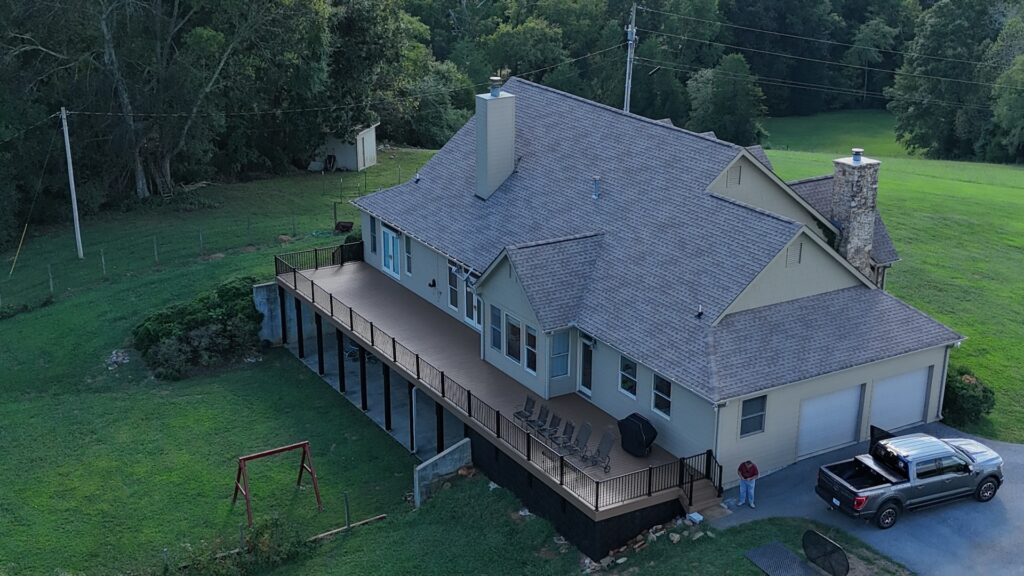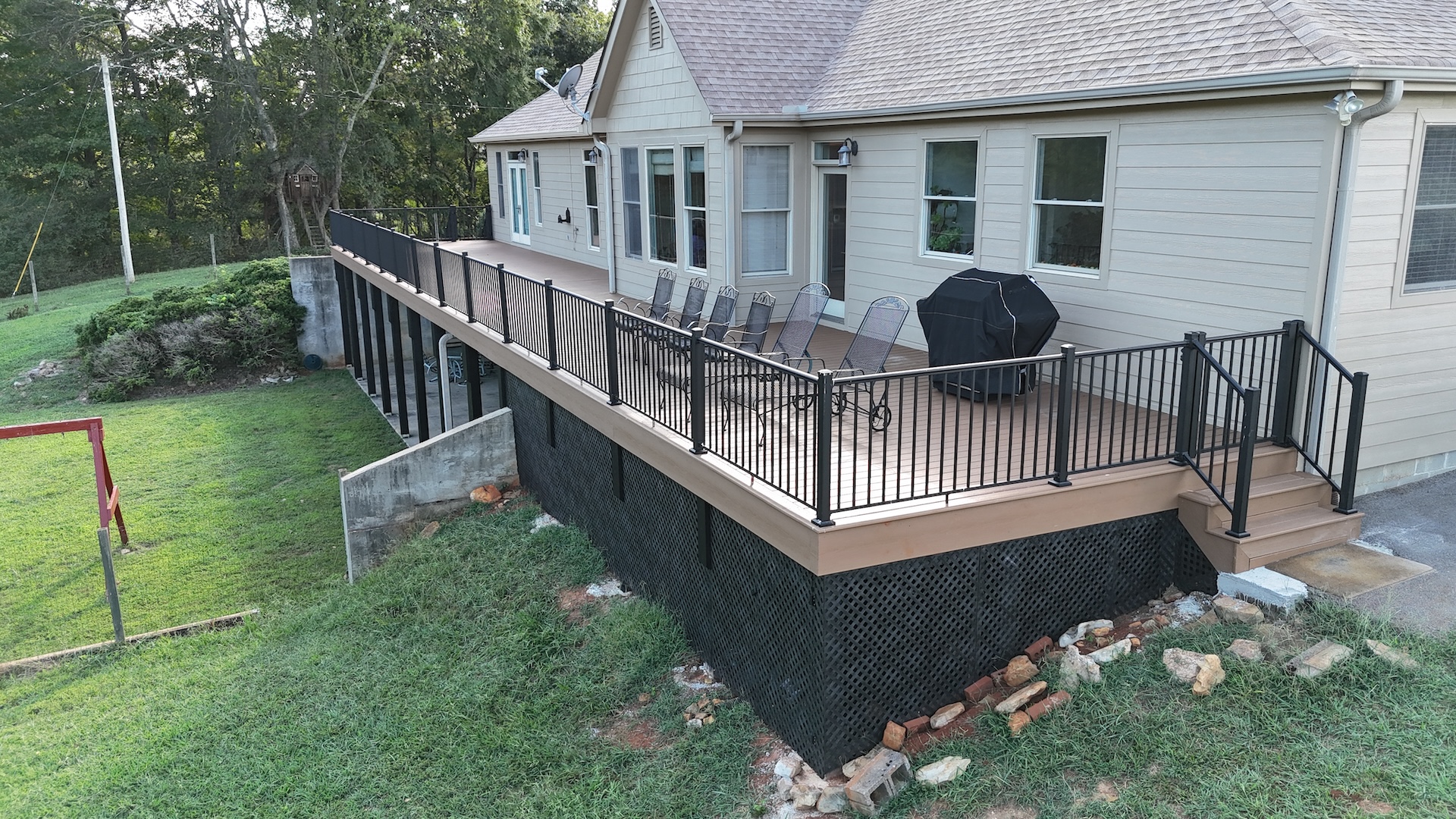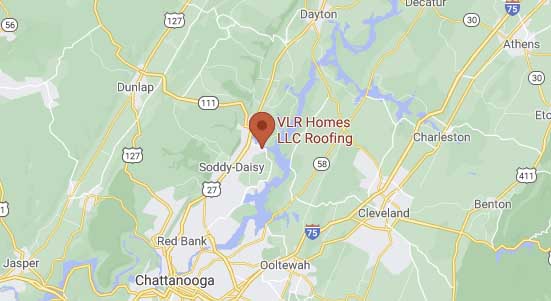Choose the Best Deck for Your Home
Adding a deck to your home is an exciting project that can transform your outdoor living space into a functional and beautiful area. However, one of the most important decisions you’ll face during this process is choosing the right decking material. Wood and composite are the two most popular options, and each has its own set of advantages and disadvantages.
In this blog, we’ll compare wood and composite decking in terms of appearance, durability, cost, maintenance, and environmental impact. By the end, you’ll have the knowledge you need to make the best decision for your home, budget, and lifestyle.
Appearance: The Look and Feel
Wood Decking
Wood decking has long been a favorite for its natural beauty and timeless appeal. Its organic grain patterns and rich tones create a warm, inviting atmosphere that’s hard to replicate.
Advantages:
- Authentic and natural look.
- Wide variety of species, such as cedar, redwood, and pressure-treated pine, each with unique aesthetics.
- Can be stained or painted to match your preferred color scheme.
- Ages beautifully over time, developing a patina that enhances its rustic charm.
Drawbacks:
- Requires regular staining or painting to maintain its appearance.
- Susceptible to fading, discoloration, and weathering if not properly maintained.
Composite Decking
Composite decking is manufactured from a blend of wood fibers and plastic, giving it the ability to mimic the appearance of natural wood. Modern composite decking has come a long way in replicating wood’s look and feel.
Advantages:
- Available in a wide range of colors and finishes, including textures that resemble natural wood grain.
- Resistant to fading, so it retains its original color for years.
- Consistent appearance without knots or imperfections.
Drawbacks:
- While high-end composites look realistic, some lower-quality products may lack the authentic texture of wood.
- Limited ability to alter its color or appearance after installation.
Durability and Lifespan
Wood Decking
While wood is naturally strong, it’s also vulnerable to damage from weather, pests, and wear over time.
Advantages:
- Can last 10–30 years or more with proper care, depending on the type of wood.
- Cedar and redwood are naturally resistant to rot and insects.
Drawbacks:
- Prone to warping, splintering, and cracking due to moisture and temperature changes.
- Vulnerable to pests like termites if not treated.
- Requires consistent maintenance to preserve its durability.
Composite Decking
Composite decking is engineered to be highly durable and resistant to many of the issues that affect wood.
Advantages:
- Resists rot, mold, and insect damage.
- Won’t warp, crack, or splinter.
- Can last 25–50 years with minimal maintenance, making it a long-term investment.
Drawbacks:
- Susceptible to surface scratches or dents from heavy furniture or high foot traffic.
- Some composite materials can become hot to the touch in direct sunlight.
Maintenance: Upkeep Requirements
Wood Decking
Wood decking requires regular maintenance to protect it from the elements and keep it looking its best.
Maintenance Needs:
- Annual cleaning with soap and water.
- Staining or painting every 2–3 years to prevent fading, moisture damage, and rot.
- Regular inspections for signs of wear, splinters, or pest activity.
Challenges:
- Can be labor-intensive and costly over time.
- Neglecting maintenance can significantly shorten its lifespan.
Composite Decking
Composite decking is designed to be low-maintenance, making it an attractive option for busy homeowners.
Maintenance Needs:
- Occasional cleaning with a hose or soap and water to remove dirt and debris.
- No staining, sealing, or painting required.

Challenges:
- Stubborn stains, such as grease from a barbecue, may require special cleaners.
- Cannot be sanded or refinished if damaged, requiring replacement of individual boards.
Environmental Impact: Sustainability Matters
Wood Decking
Wood is a renewable resource, but its environmental impact depends on how it’s sourced and treated.
Advantages:
- Sustainable if sourced from responsibly managed forests.
- Biodegradable at the end of its life cycle.
Drawbacks:
- Pressure-treated wood contains chemicals that can be harmful to the environment.
- Overharvesting of forests can contribute to deforestation.
Composite Decking
Composite decking is made from recycled materials, but its production process and disposal raise environmental concerns.
Advantages:
- Often manufactured using recycled wood fibers and plastics, reducing waste.
- Long lifespan minimizes the need for frequent replacements.
Drawbacks:
- Not biodegradable and difficult to recycle at the end of its life.
- Energy-intensive manufacturing process compared to natural wood.
Environmental Impact: Sustainability Matters

Weather Resistance: Handling the Elements
Wood Decking
Wood is naturally vulnerable to weather conditions, requiring treatment to enhance its resistance.
Strengths:
- Cedar and redwood have natural oils that resist moisture and decay.
- Pressure-treated wood is chemically treated to withstand rot and insects.
Weaknesses:
- Prolonged exposure to rain, snow, or sunlight can cause warping, cracking, and fading.
- Untreated wood is highly susceptible to rot and insect damage.
Composite Decking
Composite decking is engineered to withstand a wide range of weather conditions.
Strengths:
- Resistant to moisture, mold, and rot.
- UV-stabilized finishes help prevent fading from sunlight.
Weaknesses:
- Can become slippery when wet if not textured or grooved.
- In extremely hot climates, composite decking may expand slightly, causing minor gaps.
Installation Considerations
Wood Decking
Wood decking is relatively straightforward to install, making it a popular choice for DIY projects.
Advantages:
- Can be cut and shaped with standard tools.
- Allows for easy customization and on-site adjustments.
Challenges:
- Requires precise measurements and sealing during installation to prevent future issues.
- More prone to errors if installed without professional assistance.
Composite Decking
Composite decking installation requires specialized techniques to accommodate its unique properties.
Advantages:
- Uniform size and shape simplify the installation process.
- Hidden fastener systems provide a clean, polished appearance.
Challenges:
- Heavier and harder to work with than wood, requiring specialized tools.
- Professional installation is often recommended to ensure proper placement and durability.
Making the Right Choice: Key Factors to Consider
When deciding between wood and composite decking, consider the following factors to ensure you choose the best material for your needs:
Budget:
- If you’re looking for an affordable upfront option, wood may be the way to go.
- For long-term savings, composite decking is a better investment.
Maintenance:
- Choose wood if you’re willing to invest time and effort into regular upkeep.
- Opt for composite if you prefer a low-maintenance solution.
Climate:
- In wet or humid climates, composite decking offers better resistance to moisture and rot.
- In dry climates, wood decking can maintain its beauty with less risk of warping.
Aesthetic Preferences:
- Wood provides a natural, timeless look that’s hard to replicate.
- Composite decking offers consistent color and texture with a modern feel.
Environmental Concerns:
- Look for sustainably sourced wood or recycled composite materials to minimize your environmental footprint.
Hybrid Decking: A Blend of the Best Features
If you’re torn between the natural appeal of wood and the low-maintenance advantages of composite, hybrid decking might be the solution you’re looking for. Hybrid decking combines natural wood with composite materials, offering a balance of aesthetics, durability, and performance.
How It Works
Hybrid decking typically features a natural wood core encased in a composite shell. This design provides the strength and rigidity of wood while protecting it with a moisture-resistant, low-maintenance outer layer.
Advantages of Hybrid Decking
- Enhanced Durability: The composite shell shields the wood core from moisture, rot, and pests, extending the lifespan of the decking.
- Natural Aesthetics: The wood core provides an authentic appearance, often indistinguishable from solid wood.
- Low Maintenance: The composite surface requires minimal upkeep, eliminating the need for regular staining or sealing.
- Sustainability: Many hybrid decking products use recycled wood and plastic, making them an eco-friendly option.
Drawbacks of Hybrid Decking
- Cost: Hybrid decking is more expensive than both traditional wood and standard composite materials.
- Limited Customization: While hybrid decking offers a wood-like appearance, it may not be as customizable in terms of color or texture as pure wood.
- Installation Requirements: The layered design requires professional installation to ensure the wood core remains protected from exposure.
Ideal Applications
Hybrid decking is an excellent choice for homeowners who love the look of wood but want to minimize maintenance. It’s particularly suitable for areas with fluctuating weather conditions, as the composite shell provides superior protection against moisture and UV damage.
Final Tips for Choosing Your Decking Material
Selecting the right decking material involves more than just comparing features. Here are some practical tips to help you make an informed decision:
Assess Your Lifestyle
- If you enjoy DIY projects and don’t mind routine maintenance, wood decking might be ideal.
- If you prefer a hassle-free outdoor space, composite or hybrid decking is a better fit.
Evaluate Your Climate
- For humid or rainy climates, composite or hybrid decking offers better moisture resistance.
- For dry climates, wood can be a beautiful and durable choice with proper care.
Consider Longevity
- If you plan to stay in your home for decades, investing in composite or hybrid decking could save you money over time.
- For short-term projects or budget constraints, wood can be a cost-effective solution.
Consult a Professional
- A professional contractor can assess your outdoor space, provide material recommendations, and ensure proper installation.
Which Decking Material is Right for You?
The choice between wood and composite decking ultimately depends on your priorities, budget, and lifestyle. Wood decking offers natural beauty and charm but requires regular maintenance to preserve its appeal and durability. Composite decking, on the other hand, is a low-maintenance, long-lasting option that’s perfect for homeowners looking for a hassle-free outdoor space.
Before making your decision, weigh the pros and cons of each material and consider consulting with a professional contractor to discuss your specific needs. Whether you choose the rustic elegance of wood or the modern convenience of composite, investing in a quality deck will enhance your home’s value and provide a space for memories that last a lifetime.
Service Areas
- HQ: Soddy-Daisy, TN
- Bakewell, TN
- Dayton, TN
- Graysville, TN
- Harrison, TN
- Hixson, TN
- Lupton City, TN
- Ooltewah, TN
- Red Bank, TN
- Sale Creek, TN
- Signal Mountain, TN
- Walden, TN

About VLR Homes, LLC
Founded in 2019 by Francisco Romero, VLR Homes is dedicated to providing the area with roofing and remodeling services of the highest standard. Find out how this family-owned and operated company can put over a decade of general contracting experience to work for you!


VLR Homes, LLC
4.7
We have engaged Francisco and VLR Homes 3 times now. From painting the house, remodeling a master bath and constructing a screened in porch area they have responded with quality work at a fair price. When things came up like they always do, VLR had a solution (some panels of 50 year old siding replaced with Tyvek and up to code replacement). Again, at a fair price and done right the first time. Francisco is responsive with the good and the bad news â  straight up and always with a plan. We intend to use VLR in the future for projects large or small.
-Paul N. in Hixson, TN












